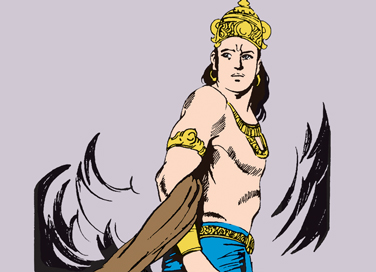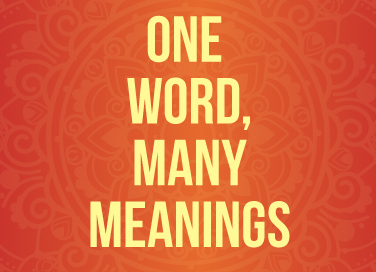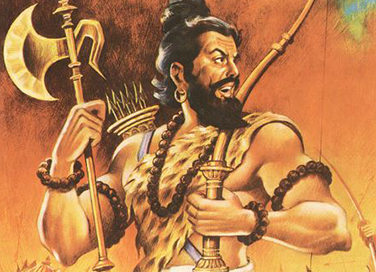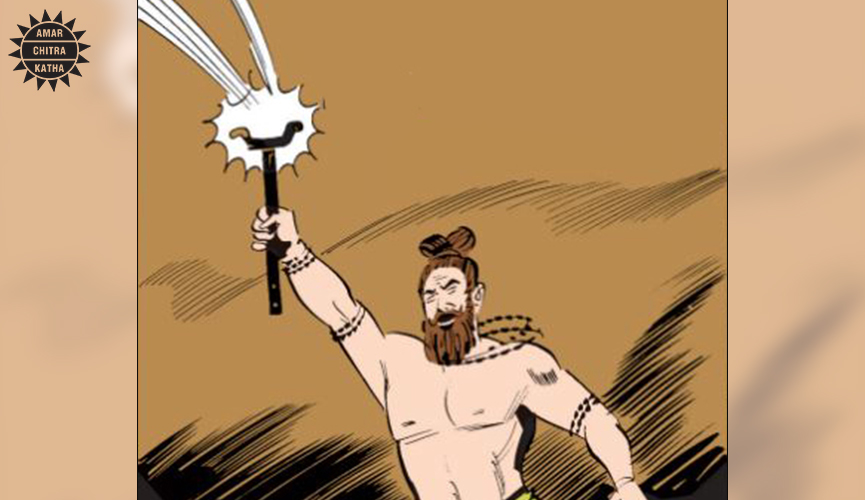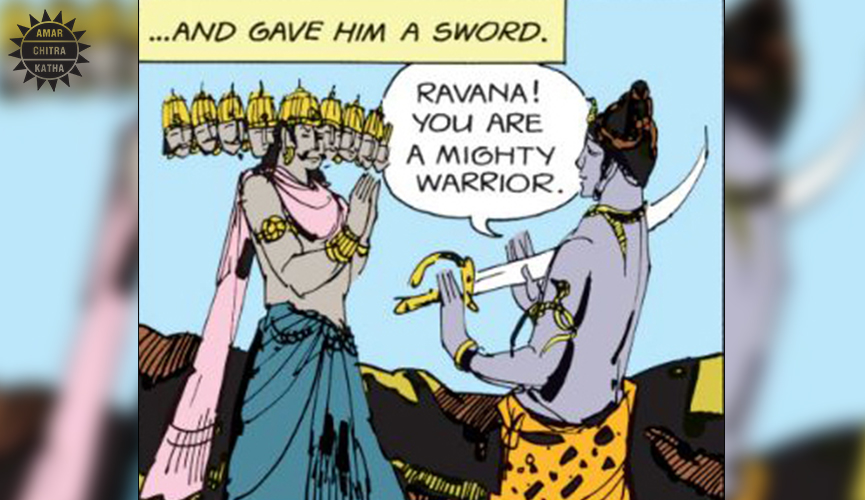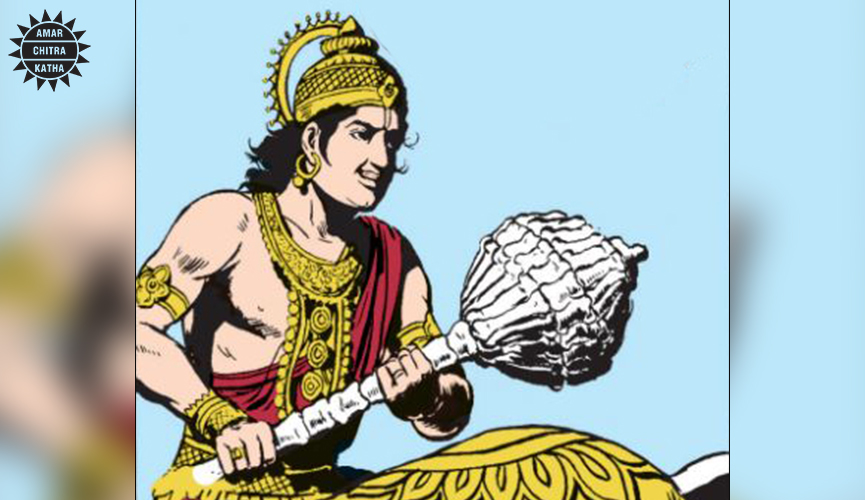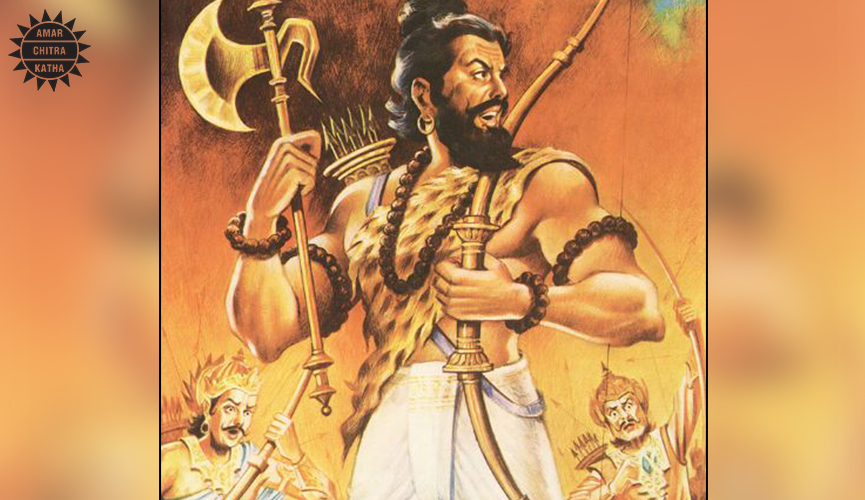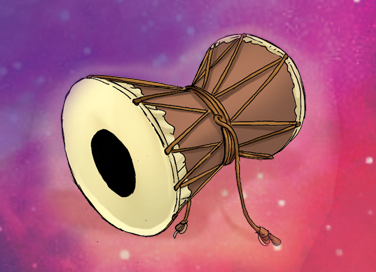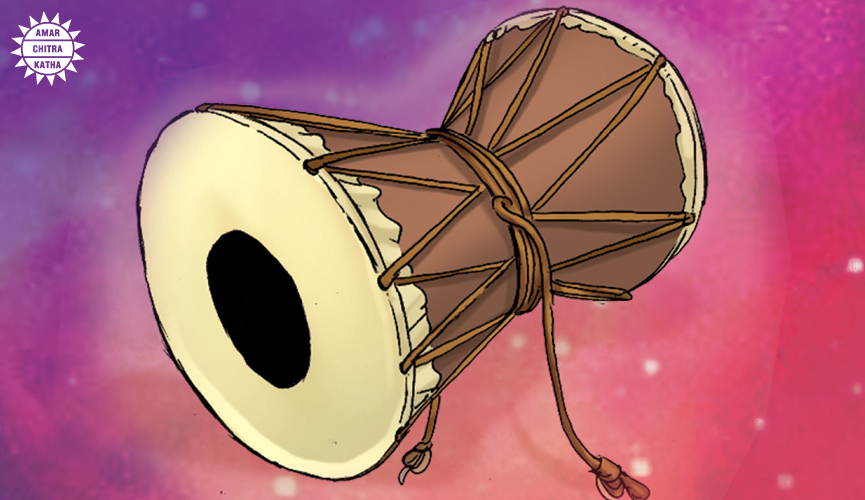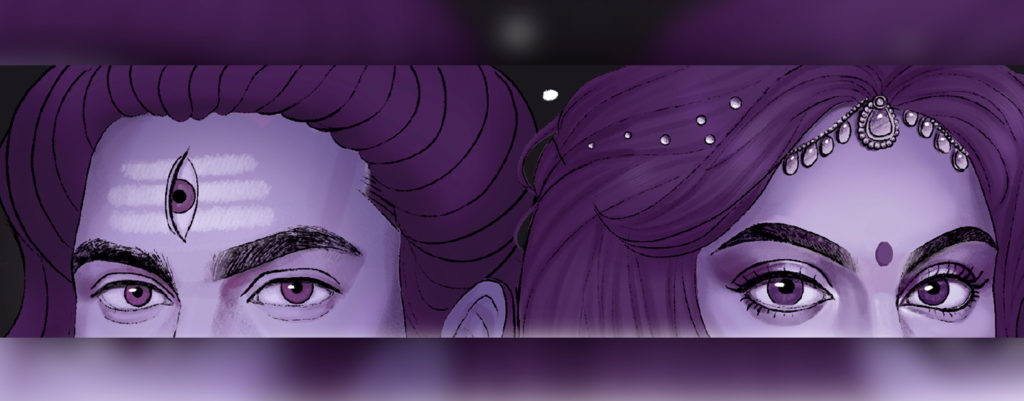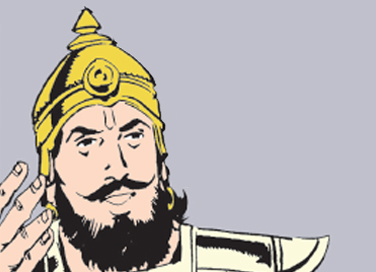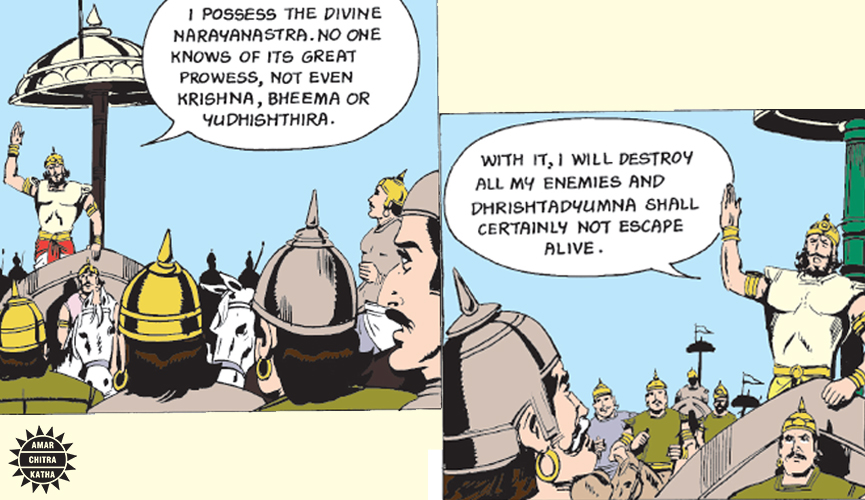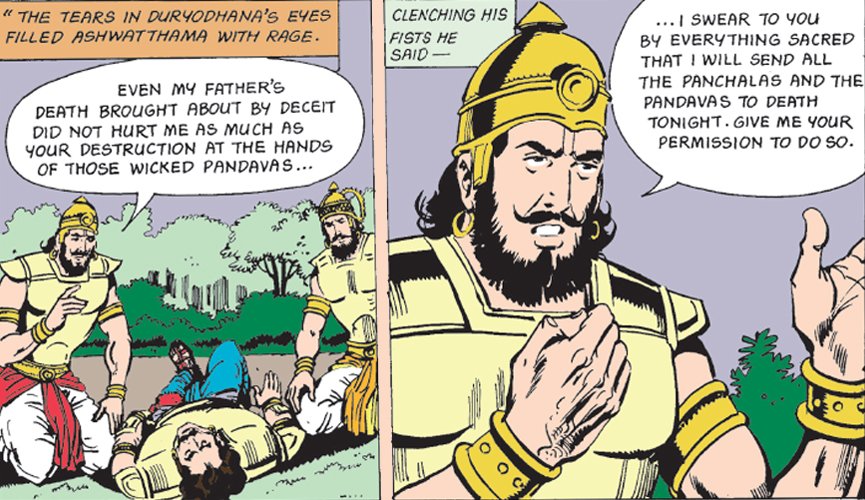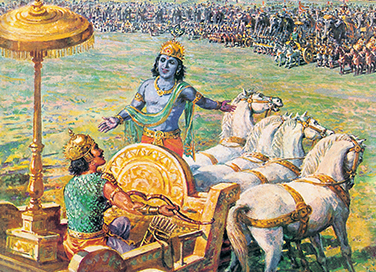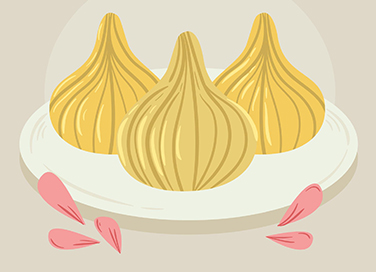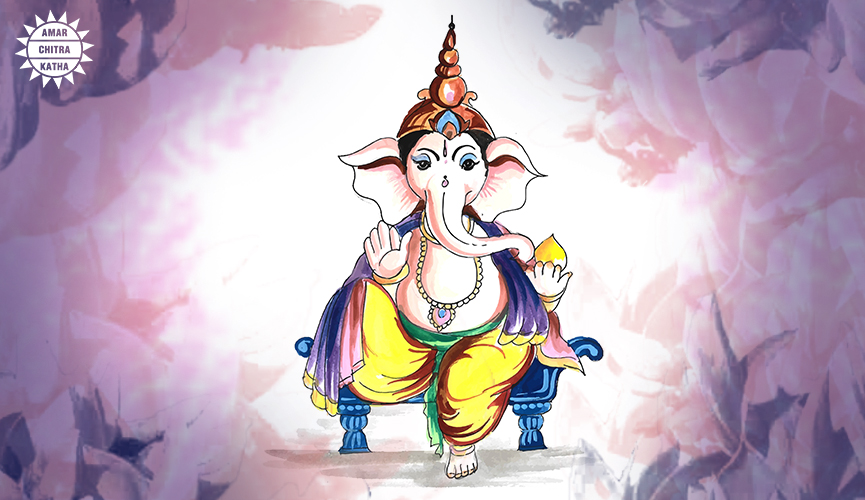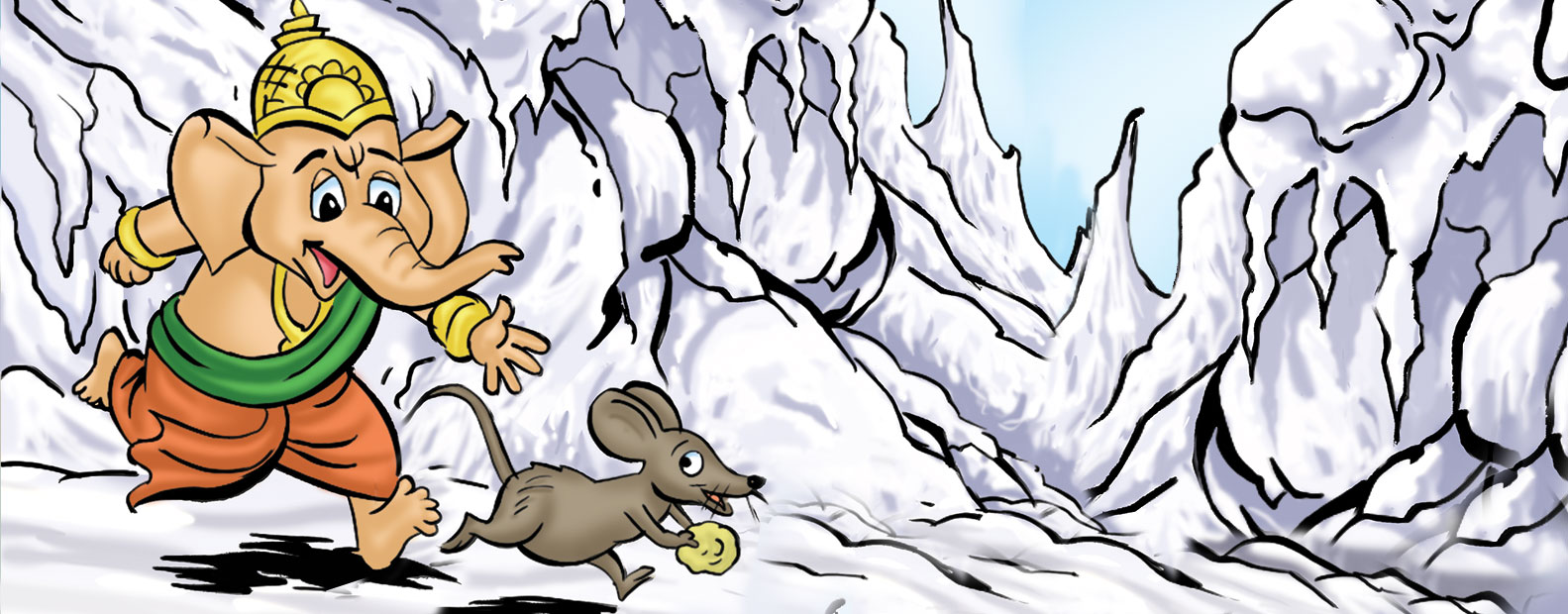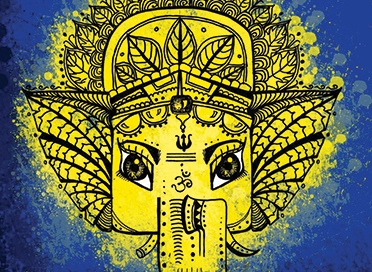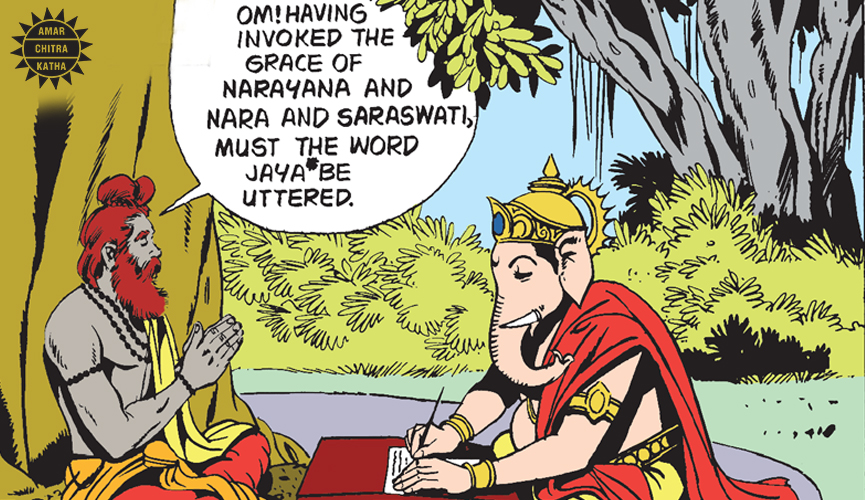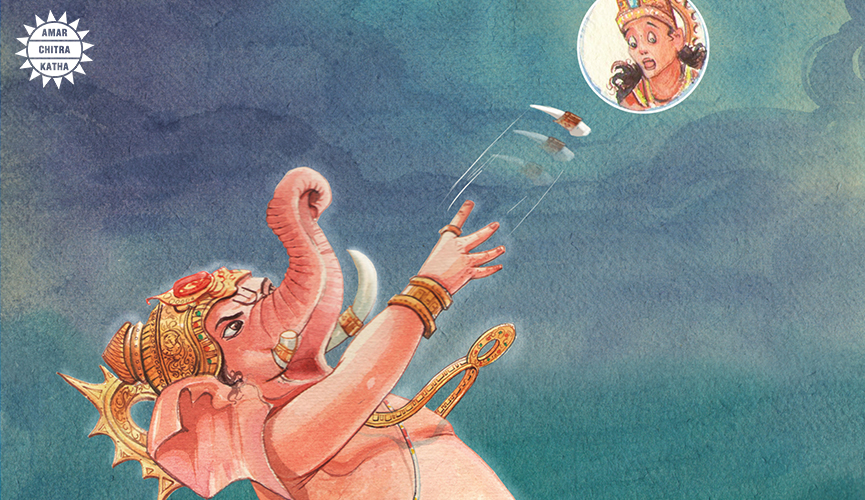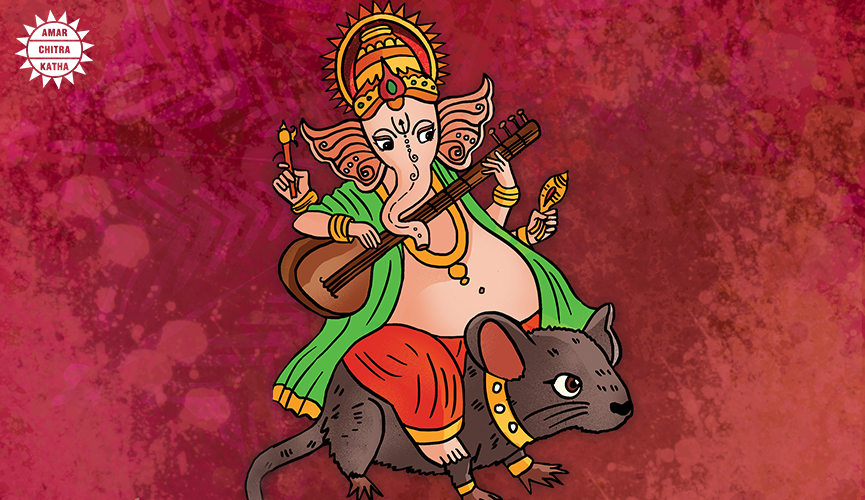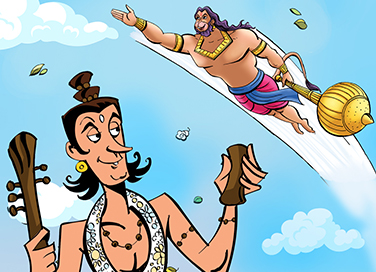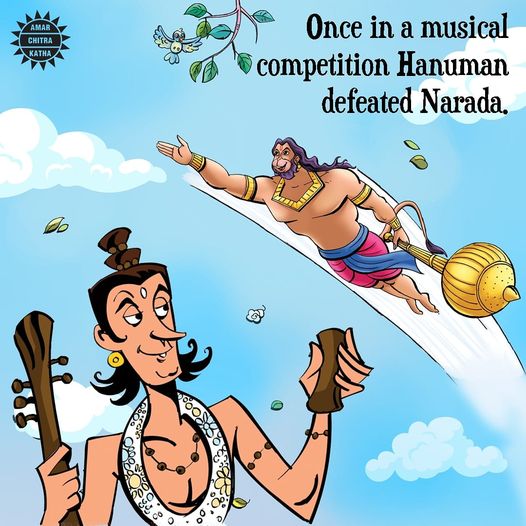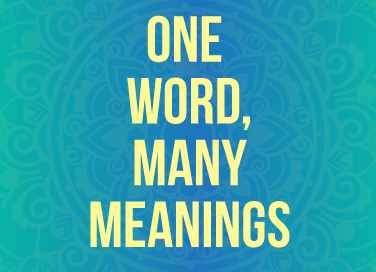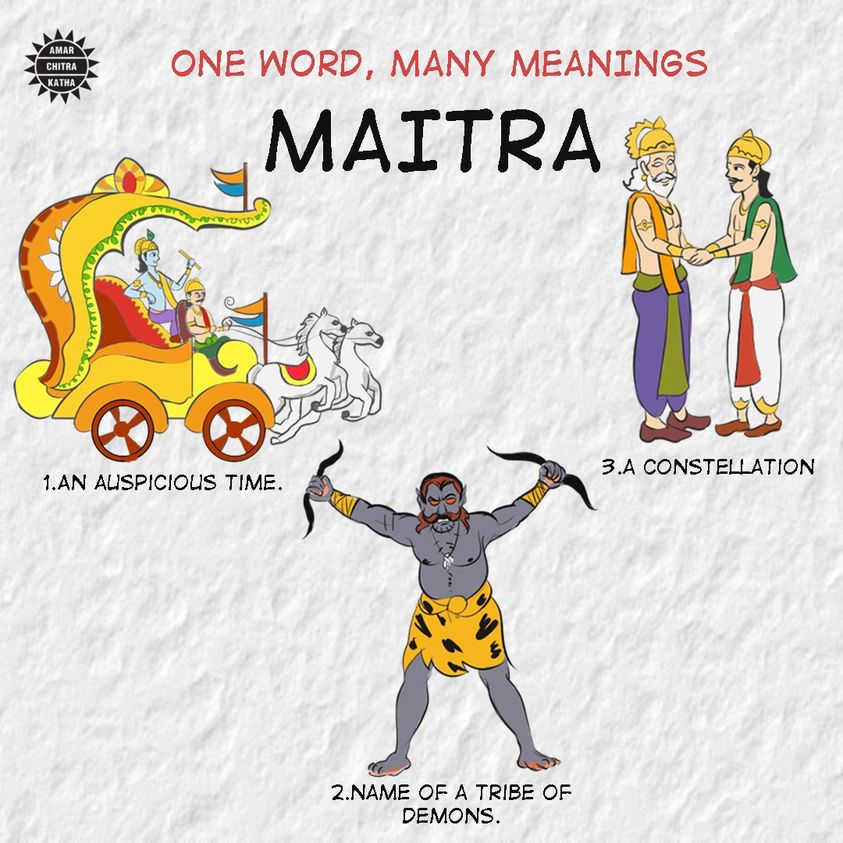By Srinidhi Murthy
Indra and Shachi were the king and queen of the Devas. The loyalty and devotion shown by Shachi, helped Indra gain his kingdom back from Nahusha, the king who replaced him for a while.
Threat from Trishira
Indra lived peacefully with his wife Shachi in his celestial city, Amaravati. But their peace was soon destroyed with the birth of Trishiras. Trishiras was the son of Indra’s enemy, Tvashta. Tvastha vowed to make his son the king of the gods, at the time of his birth. Trishiras grew up to become strong-willed and powerful. He decided to perform severe penance to destroy Indra. When Indra heard about his intense penance, he sent the celestial maidens, the apsaras, to distract him and break his concentration. However, the apasaras could not tempt Trishiras. Indra, taking matters into his own hands, used his thunderbolt to kill Trishiras, when he was lost in prayer. Since Trishiras was a Brahmana, Indra had to perform severe penance to atone for killing him.
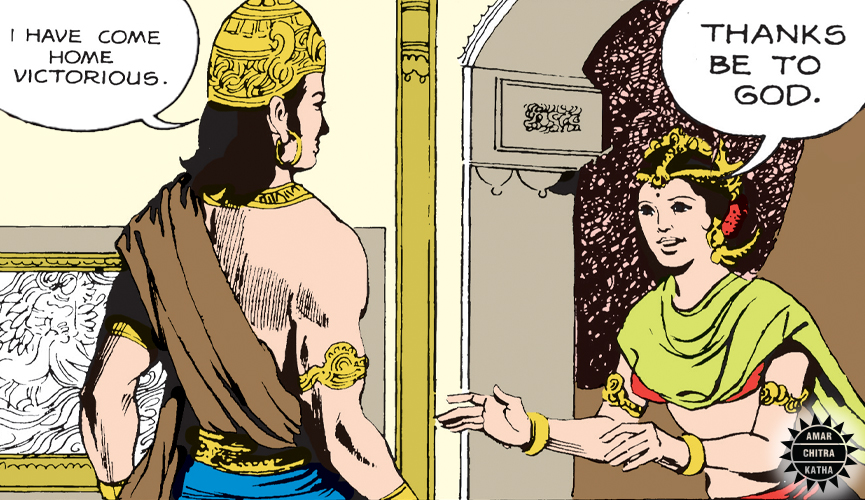
Revenge of Tvashta
Struck by grief at the death of his son, Tvashta performed a sacrifice and created an Asura named Vritra to avenge Trishiras. There was a terrible battle between Vritra and the Devas. Indra barely escaped and had to appeal to Vishnu for help. Vishnu advised Indra to make peace with Vritra for the time being. Vishnu also vowed to help Indra, when the right time arrives. Indra agreed and soon he made peace with Vritra. The latter, however, was sceptical. He, therefore, made Indra promise that Indra would not kill him with any weapon – wet or dry, of wood or stone. He also made Indra promise that he would not kill Vritra during the day or the night. One evening, Indra and Vritra were on a seashore. Indra saw his chance as it was neither day nor night. He prayed to Vishnu to help him to kill Vritra with the seafoam, which was not a weapon and was neither wet nor dry. Vishnu entered the foam and Indra immediately threw it at Vritra. The Asura could not withstand the power of Vishnu and was killed.
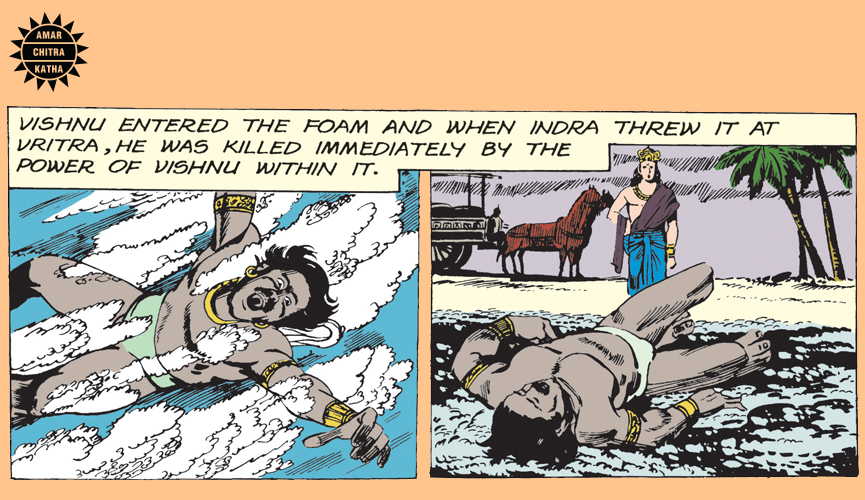
Arrival of Nahusha
Though Indra emerged successful in killing Vritra, he was ashamed to face the world as he had betrayed Vritra in the process. Indra ran away from his city and decided to hide where no one could find him. Without the king of gods, heaven and earth descended into darkness and chaos. The Devas met in a council and decided to appoint a suitable king to replace Indra. They selected Nahusha, the son of King Ayus, as the successor of Indra. Nahusha was a good and pious man. He accepted the invitation of the Devas to become their king. Nahusha was given the power and strength required to become the king of the Devas. Nahusha also had the power to obtain half of the strength of the person before his sight.
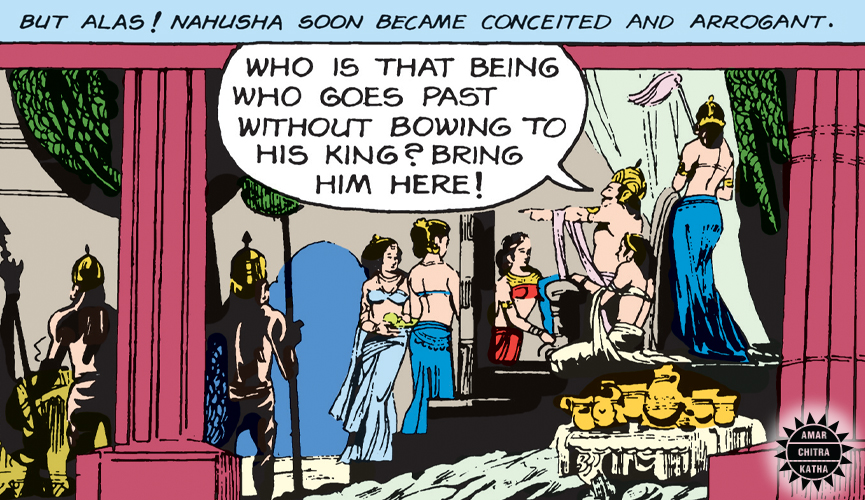
Search for Indra
After Nahusha became the king of heavens, he started to enjoy all celestial pleasures. He became arrogant and conceited, treating everyone else with disrespect. The Devas were unhappy with this tyrannical behaviour but felt helpless against his powers. One day, Nahusha saw Shachi in the gardens and decided to make her his queen. The terrified Sachi took refuge at the abode of Sage Brihaspathi. Nahusha was infuriated and demanded that Shachi returns to Amravati. Sage Brihaspathi pacified Shachi and advised her to come up with a plan to find Indra. As per his advice, Sachi informed Nahusha to conduct a search for Indra. She promised to marry him if Indra was not found. The Devas once again appealed to Vishnu for help. Vishnu advised them to find Indra and make him perform an Ashwamedha to atone for the sin of killing Vritra by deceit.
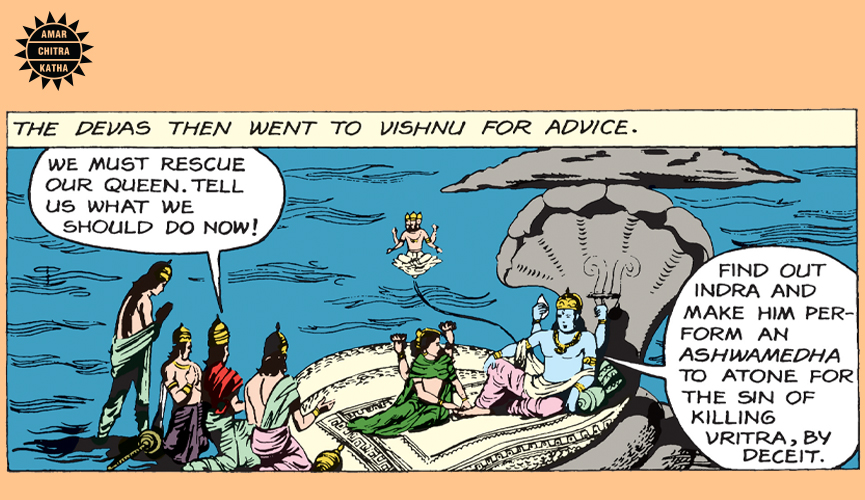
The End of Nahusha
Devas found Indra after a long search and convinced him to fight Nahusha. Indra performed an Ashwamedha and came back to his city to confront Nahusha. However, upon seeing Nahusha’s power, Indra felt weak and ran away. The tearful Shachi prayed to Upashruti, the Goddess of the Night, for help. The goddess took Shachi to Indra, where they came up with a plan to defeat Nahusha. According to their plan, Shachi agreed to become Nahusha’s wife on the condition that he visit her in a palanquin carried by the seven sages. Nahusha was thrilled with the arrangement and he immediately ordered the palanquin to meet Shachi. Soon, the seven sages assembled and started to carry Nahusha to Shachi. However, the sages moved slowly much to the irritation of Nahusha. In his anger, he kicked Sage Agastya, who was holding the palanquin from the front. Furious, Agastya cursed Nahusha and transformed him into a snake. Now reduced to a mere snake, Nahusha was no threat to Indra, who came back to rule Amravati with his devoted queen, Shachi.
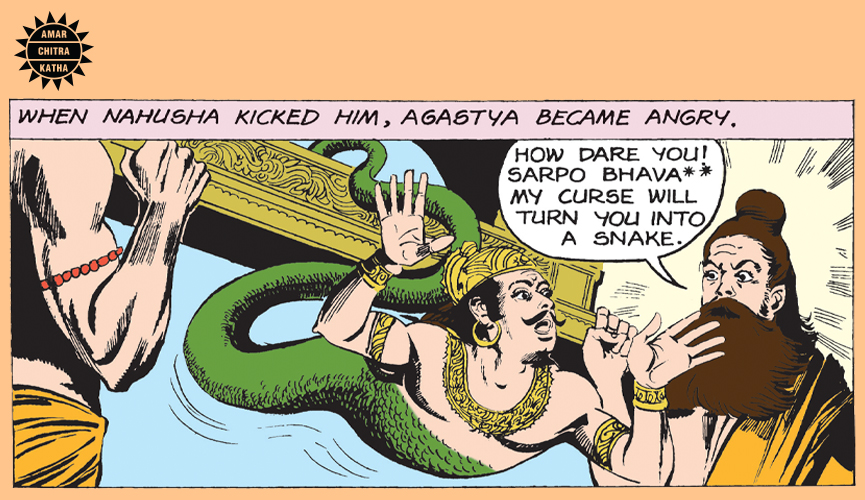
Read more such fascinating legends from the epics and Puranas on the ACK Comics app now!




